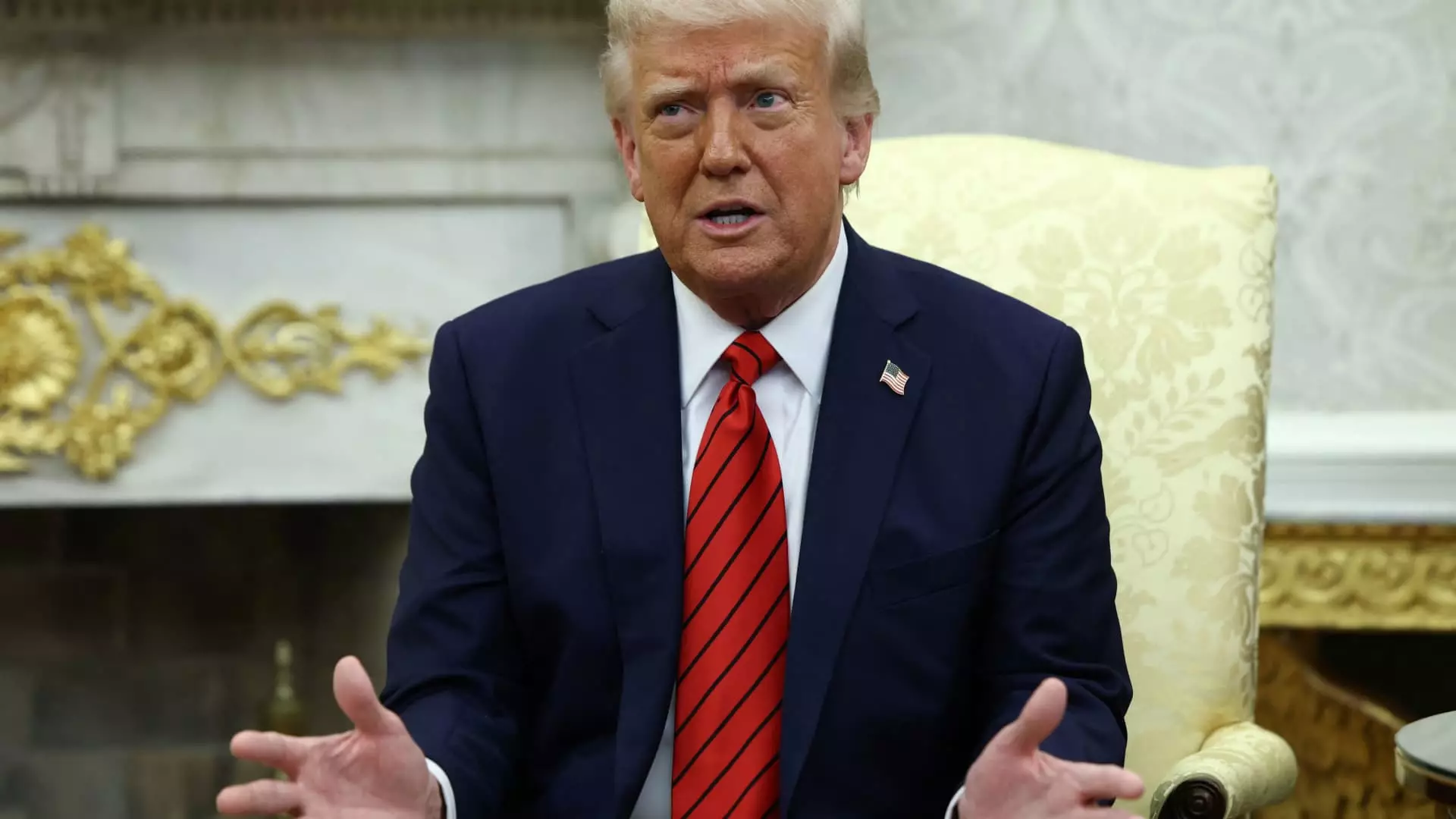The stock market is a creature of habit, often reacting sharply to news both good and bad. The response to President Trump’s announcement of tariffs on April 2 was instantaneous, as investors recoiled at the prospect of an escalating trade war. While the initial panic seems to have subsided, the underlying tension remains palpable. For many investors, simply basking in the relief that their individual stocks have managed to avoid the scythe of tariffs is akin to walking on a tightrope; the potential for disaster is only a headline away.
The lack of substantive deals and clear timelines following Trump’s tariff introduction shows that we are dealing with an unstable regime of trade policies. Despite the White House’s insistence that negotiations are progressing with several countries—including Japan—many remain skeptical. The proverbial light at the end of the tunnel is barely visible, making it clear that tariffs are not just a challenge but a potential long-term detriment to investor confidence.
Uncertainty Breeds Caution
Scott Welch, the chief investment officer of Certuity, pointed out a critical aspect: “We don’t really have any outcome yet to these tariff negotiations.” This statement encapsulates the fog of uncertainty clouding the market. Each day that elapses without a decisive trade agreement leaves room for speculation and fear. Investors are left juggling the prospective impact of these negotiations alongside sector-specific tariffs that loom ominously on the horizon.
Nvidia’s recent announcement of a $5.5 billion charge related to export restrictions serves as a stark warning to those who dare to invest in volatile sectors. The company’s stock plummeted nearly 10% over two days, highlighting just how quickly good fortunes can shift in the realm of tech. The unpredictability of tariffs, like a lurking predator, sends ripples through even established firms.
The Complex Web of Negotiation Tactics
The negotiation landscape looks murky; while tariffs are designed to protect specific interests, they can inadvertently harm others in the same ecosystem. Trump’s willingness to link seemingly unrelated issues, such as financing an Alaskan gas project or influencing social media platforms like TikTok, further complicates the narrative. This unpredictability makes it challenging for investors to assess which businesses might be affected next, leading to unease and volatility.
Lawrence McDonald, founder of the Bear Traps Report, succinctly noted that the ongoing “stop-start thing” of negotiations keeps domestic retail investors engaged, but it discourages foreign investments. As global markets shift, American stocks may find themselves under siege, compounding the risks tied to an already tumultuous trading environment. A lack of international confidence in the U.S. fiscal landscape is shifting investor sentiment and may portend a more bearish outlook.
Examining the Earnings Season
Entering earnings season, the repercussions of trade tensions will inevitably trickle down to company performance reports. Corporations may opt for a strategy similar to United Airlines, providing dual forecasts laden with uncertainty, leaving investors guessing about the actual financial landscape. This kind of approach can throw more fuel on the fire, as not all executives can afford to play coy in a climate of heightened scrutiny.
Adam Parker, CEO of Trivariate Research, presented a concerning statistic: when firms revise earnings per share downward by over 5%, market reactions have recently been particularly severe. This trend underscores an unsettling reality: negative updates are met with relentless punishment. The average penalty for such downgrades has reached an alarming fourth percentile relative to historical norms. This dramatic shift serves to highlight how fragile investor sentiment is in today’s market, leaving many stocks vulnerable to abrupt sell-offs.
The Takeaway: Navigating Uncertain Seas
Making decisions amidst these tumultuous seas of trade policy is fraught with peril. Investors must navigate not just the potential impact of tariffs but also the broader economic landscape influenced by such uncertainties. For those inclined to center-right liberalism, the focus should be on endorsing sound economic policies that promote stability rather than exacerbating fears through prolonged negotiations.
When faced with a volatile market, understanding the intricate interplay between tariffs, investor sentiment, and corporate earnings becomes essential. The trajectory of stocks in the wake of such uncertainty requires astute observation and strategic management, lest investors find themselves caught off-guard by the next wave of market turbulence. It’s a reality check: in the world of finance, the stakes are higher than ever, and the ripple effects of tariffs are just beginning to take shape.

